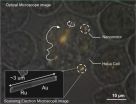(Press-News.org) Lower income countries may soon be facing the same obesity and diabetes epidemics as their higher income counterparts. Ownership of televisions, cars and computers was recently found to be associated with increased rates of obesity and diabetes in lower and middle income countries, according to an international study published in CMAJ (Canadian Medical Association Journal).
"Although we found no trend between household devices ownership and obesity or diabetes in high income countries, there was a stronger relation as the level of country income decreased. This relation was most prominent in low income countries, such that the prevalence of obesity increased from 3.4% for no devices owned to 14.5% for 3 devices … .The prevalence of diabetes also increased (no devices: 4.7%; 3 devices: 11.7%)," writes lead author Dr. Scott Lear, Faculty of Health Sciences, Simon Fraser University, and Division of Cardiology, Providence Health Care, Vancouver, British Columbia.
Although the global increases in rates of obesity and type 2 diabetes have largely been among high income countries, these rates are expected to increase in low and middle income countries as they become more developed and industrialized.
A team of international researchers looked at data on 153 996 adults in 107 599 households from 17 countries enrolled in the Prospective Urban Rural Epidemiology study. Of these, 10 000 participants came from Canada — more than a quarter of them from the Vancouver area. The other countries included:
Sweden, United Arab Emirates (high income)
Argentina, Brazil, Chile, Malaysia, Poland, South Africa, Turkey (upper-middle income)
China, Columbia, Iran (lower-middle income)
Bangladesh, India, Pakistan, Zimbabwe (low income)
Participants were asked about physical activity, sitting time and diet, and whether they owned a TV, computer or car, or had diabetes. Their height and weight were measured.
Televisions were the most common device owned by households; 78% of households owned at least 1 television, followed by 34% that owned a computer and 32% a car. More people in urban areas of middle and low income countries owned devices as compared with those in rural areas. In low income countries, owning all 3 devices was associated with a 31% decrease in physical activity, 21% increase in sitting and a 9-cm increase in waist size compared with those who owned no devices.
"Although we found a significant positive association between owning household devices and obesity or diabetes in low income countries, we were unable to detect a relationship at the high income country level. The associations in the upper-middle and lower-middle income countries were intermediate between the high and low risk countries," write the authors.
The authors suggest that this may be because the negative impact of these devices on health have already occurred and are already reflected in the high rates of obesity and type 2 diabetes in highincome countries.
"With increasing uptake of modern-day conveniences — TVs, cars, computers — low and middle income countries could see the same obesity and diabetes rates as in high income countries that are the result of too much sitting, less physical activity and increased consumption of calories," states Dr. Lear. "This can lead to potentially devastating societal health care consequences in these countries."
INFORMATION: END
Obesity, type 2 diabetes epidemics spreading to developing world as more own TVs, computer
2014-02-10
ELSE PRESS RELEASES FROM THIS DATE:
Supreme Court of Canada ruling on life support has wider impact: Hassan Rasouli
2014-02-10
In the debate over whether to withdraw life support for patients who have no hope of recovery, the recent judgment by the Supreme Court of Canada on the Hassan Rasouli case in Ontario has broader implications for health care in the country, argue authors in a commentary in CMAJ (Canadian Medical Association Journal).
The Supreme Court of Canada ruled in October 2013 that physicians who recommend withdrawing life support over the wishes of substitute decision-makers must apply to Ontario's Consent and Capacity Board, "regardless of whether they feel ongoing treatment falls ...
Researchers call for more study into impact of repetitive heading in soccer
2014-02-10
TORONTO, Feb. 10, 2014—Soccer is the most-popular and fastest-growing sport in the world and, like many contact sports, players are at risk of suffering concussions from collisions on the field.
But researchers warned in a paper published today that not enough attention has been given to the unique aspect of soccer – the purposeful use of the head to control the ball – and the long-term consequences of repetitive heading.
The literature review by Dr. Tom Schweizer, director of the Neuroscience Research Program of St. Michael's Hospital, was published in the journal ...
Conserved nuclear envelope protein uses a shuttle service to travel between job sites
2014-02-10
KANSAS CITY, MO—Researchers at the Stowers Institute for Medical Research have glimpsed two proteins working together inside living cells to facilitate communication between the cell's nucleus and its exterior compartment, the cytoplasm. The research provides new clues into how a crucial protein that is found in organisms from yeast to humans does its work.
The study, led by Stowers Investigator Sue Jaspersen, Ph.D., focused on a protein called Ndc1, which controls when and where a cell inserts holes into the double-walled membrane that surrounds its nucleus. In yeast, ...
Weakness exposed in most common cancer gene
2014-02-10
NYU Langone Medical Center researchers have found a biological weakness in the workings of the most commonly mutated gene involved in human cancers, known as mutant K-Ras, which they say can be exploited by drug chemotherapies to thwart tumor growth.
Mutant K-Ras has long been suspected of being the driving force behind more than a third of all cancers, including colon, lung, and a majority of pancreatic cancers. Indeed, Ras cancers, which are unusually aggressive, are thought of as "undruggable" because every previous attempt to stall their growth has failed.
Reporting ...
Transcendental Meditation significantly reduces PTSD in African refugees within 10 days
2014-02-10
African civilians in war-torn countries have experienced the threat of violence or death, and many have witnessed the abuse, torture, rape and even murder of loved ones. Many Congolese living in Ugandan refugee camps are suffering from severe posttraumatic stress disorder (PTSD).
New research shows that Congolese war refugees who learned the Transcendental Meditation® technique showed a significant reduction in posttraumatic stress disorder in just 10 days, according to a study published today in the February 2014 issue of the Journal of Traumatic Stress (Volume 27, ...
Nanomotors are controlled, for the first time, inside living cells
2014-02-10
For the first time, a team of chemists and engineers at Penn State University have placed tiny synthetic motors inside live human cells, propelled them with ultrasonic waves and steered them magnetically. It's not exactly "Fantastic Voyage," but it's close. The nanomotors, which are rocket-shaped metal particles, move around inside the cells, spinning and battering against the cell membrane.
"As these nanomotors move around and bump into structures inside the cells, the live cells show internal mechanical responses that no one has seen before," said Tom Mallouk, Evan ...
Matchmaking this Valentine's Day: How it can bring you the most happiness
2014-02-10
Austin – February 10, 2014 – With Valentine's Day around the corner, you may be thinking of pairing up two friends for a date. If you follow your instinct to play Cupid, it'll pay off in happiness – not necessarily for the new couple, but definitely for you.
According to new research, matchmaking, a time-honored tradition, brings intrinsic happiness to the matchmaker. To maximize the psychological benefits of matchmaking, you should take care to introduce two people who not only seem compatible but who would be unlikely to meet otherwise, researchers say.
"At some point, ...
Genetic discovery to keep crops disease-free
2014-02-10
Curtin University researchers have found a way to breed disease-resistant wheat with no downside, potentially bringing multi-million dollar savings to Australia's agricultural industry.
According to John Curtin Distinguished Professor Richard Oliver, Director of the Australian Centre for Necrotrophic Fungal Pathogens (ACNFP) at Curtin, farmers can lose more than 0.35 tonnes per hectare in wheat yields to Yellow Spot, even after applying fungicide.
For an average-sized farm of 4000 hectares, this could mean an almost $500,000 loss to disease per year – or about $212 ...
Slowing down the immune system when in overdrive
2014-02-10
Many people suffer from chronic inflammation because their immune systems overreact to 'self' tissue. Sydney scientists believe that a small molecule known as Interleukin 21 is a promising therapeutic target in such cases.
Interleukin 21 (IL-21) is one of a group of chemical messengers known as 'cytokines', which affect the behaviour of immune cells. IL-21 is already well known to play an important role in autoimmune diseases such as Sjögren's syndrome and type 1 diabetes.
The current study shows how much IL-21 contributes to inflammation. It also shows how important ...
When you always gotta go…
2014-02-10
Problems related to urination, including incontinence and having to get up to urinate at night-time, have become more acceptable topics of discussion over recent years. New treatment options have also led doctors to address these symptoms more actively. Despite this, no study has effectively compared the bother of each of these bladder symptoms for men and women of all ages.
The FINNO Study is an ongoing questionnaire survey conducted right across Finland. A random sample of 6,000 adults identified from the Finnish Population Register, were contacted with a questionnaire ...



